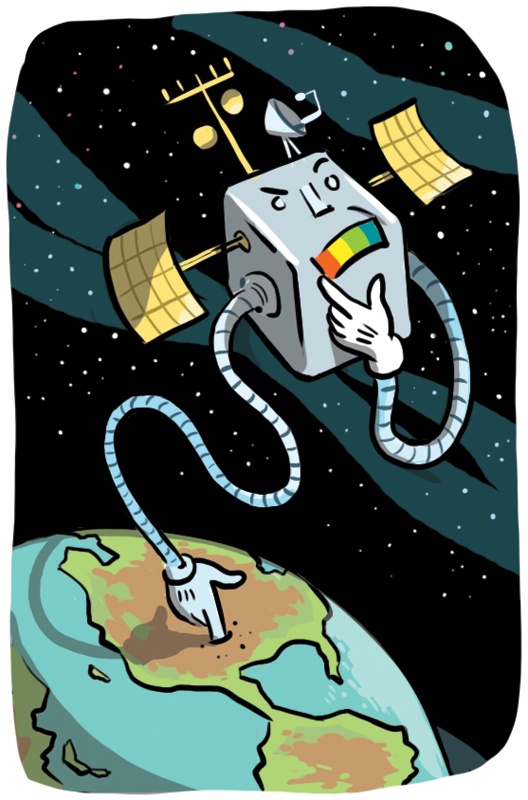Efforts are underway to preserve the Alamo—the one John Wayne made famous on the big screen. Old photos, maps, books, etc., are also finding safekeeping, thanks to the Rescuing Texas History Mini-Grant program. Researchers are going all the way into space to learn more about providing drought relief around the world. And we note the anniversary of the birth of Nikola Tesla, one of the great forward thinkers in the study of electricity.
Saving Alamo Village
Corpus Christi businessman David Jones wants to ensure that future generations remember the Alamo—not the mission in San Antonio, but the crumbling old movie set about 120 miles away. So Jones is trying to raise $8 million to buy and renovate the buildings, according to The Associated Press.
Alamo Village, erected for the epic 1960 John Wayne film “The Alamo,” is succumbing to neglect. The set, on 400 acres near Brackettville, was used in dozens of film and TV productions, including the 1989 miniseries “Lonesome Dove.” For decades it was a tourist attraction, featuring musical shows and staged gunfights daily.
The set closed to the public after the last remaining owner died in 2009. The land now is used primarily for cattle grazing and hunting.
“The weather and elements are taking a toll on it,” Texas Film Commission Director Heather Page told the AP. “I think it would be disappointing to lose something like that.”
Rescue Texas History
The University of North Texas is accepting applications for grants to help libraries, museums and historical societies digitize their archives. The Rescuing Texas History Mini-Grant program provides grants up to $1,000.
All of the materials are scanned at UNT Libraries and hosted on The Portal to Texas History, a digital gateway containing more than 623,000 items. This includes photographs, maps, books, letters, manuscripts, newspapers and artifacts, dating to the 15th century. The portal provides free online access to Texas history materials that can be used by educators, students and the public.
The University of North Texas is accepting applications for grants to help libraries, museums and historical societies digitize their archives. The Rescuing Texas History Mini-Grant program provides grants up to $1,000.
The application deadline for the grants is July 31. More information is available online or by calling (940) 565-3023.
Drought Help From the Heavens
A satellite launched by NASA earlier this year could help people around the world tackle the challenges of drought, StateImpact Texas reports. University of Texas researchers will play a part in the mission, which could also help forecast flooding and allow officials to better manage reservoirs.
The satellite carries equipment that measures heat from Earth’s surface and helps pinpoint the location of land surveyed. Data collected by soil moisture monitors, some installed around the Hill Country by UT’s Bureau of Economic Geology, will be combined with the satellite readings.
When “it rains, it’s still got to saturate the soil before it runs off and fills up the reservoir,” said Todd Caldwell with UT’s Jackson School of Geosciences. “There’s a time delay there. So to forecast the reservoir response, you really need to know what’s going on in the soil first.”
Remembering an Electricity Genius
Electricity pioneer Nikola Tesla’s birthday is in July, and his life was tied to electricity from the moment of birth. Tesla was born in 1856 in Croatia, reportedly during a severe lightning storm at the stroke of midnight as July 9 became July 10.
Tesla made dozens of breakthroughs in the production, transmission and application of electric power. He invented the first alternating current motor and developed AC generation and transmission technology. The AC system he championed and improved remains the global standard for power transmission.
In 1895, Tesla partnered with General Electric to install AC generators at Niagara Falls, creating the first modern power station, according to history.com. And his Tesla coil, a high-voltage transformer, laid the foundation for wireless technologies used today.
He died in 1943 in New York.




